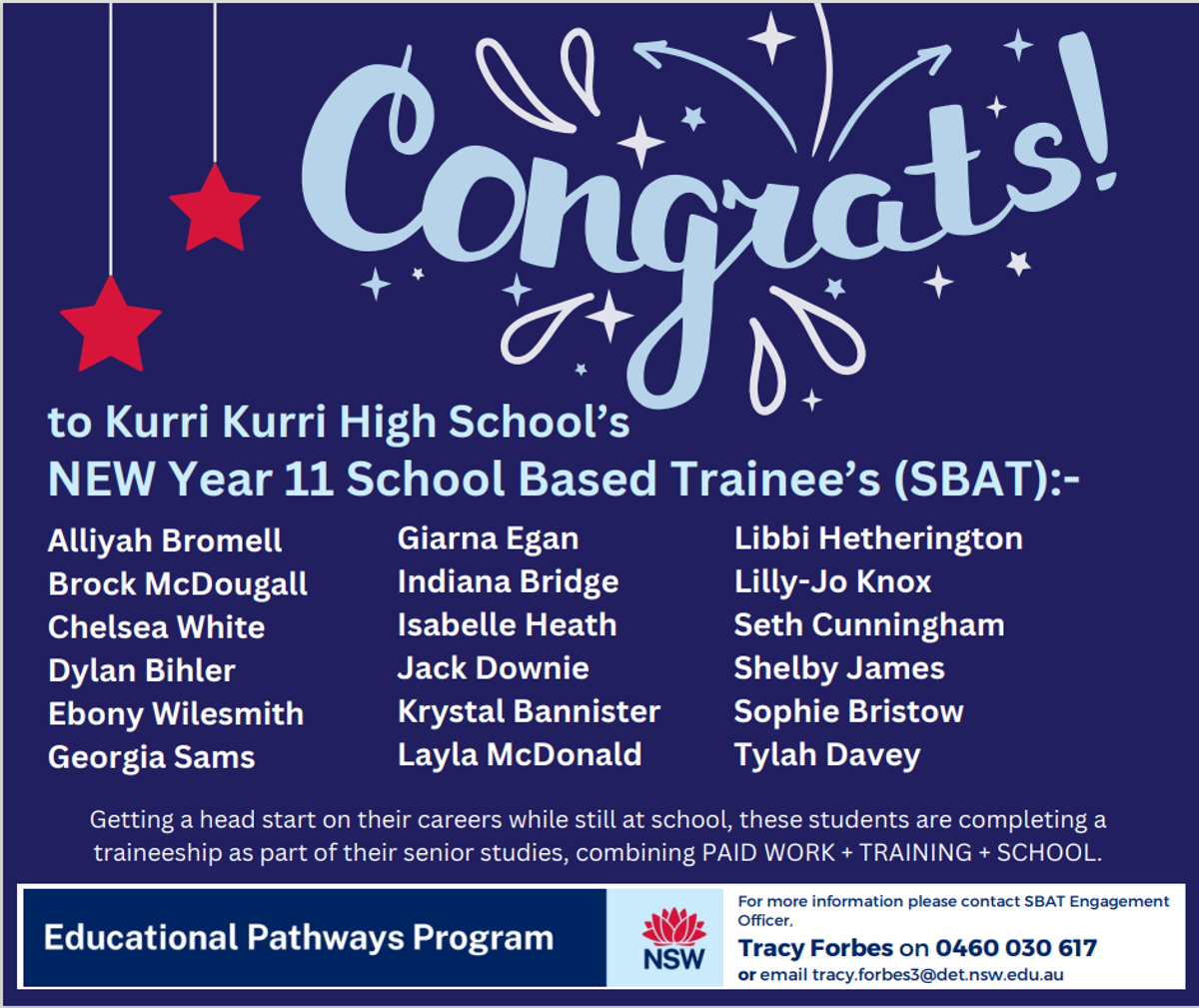SBATs
School based apprenticeship and traineeships

SBATs
School based apprenticeship and traineeships


Students should start here at the department of education website.
For more information regarding an SBAT, please see our Education Pathway Program officer - Tracy Forbes, or click below.
SBAT FAQ'S-
Click on the link to read all the frequently asked questions relating to an SBAT (school-based apprenticeships and traineeships)
For additional information, please email Tracy Forbes Tracy.Forbes3@det.nsw.edu.au